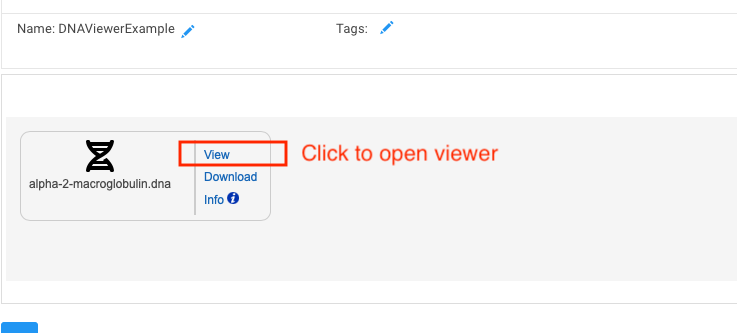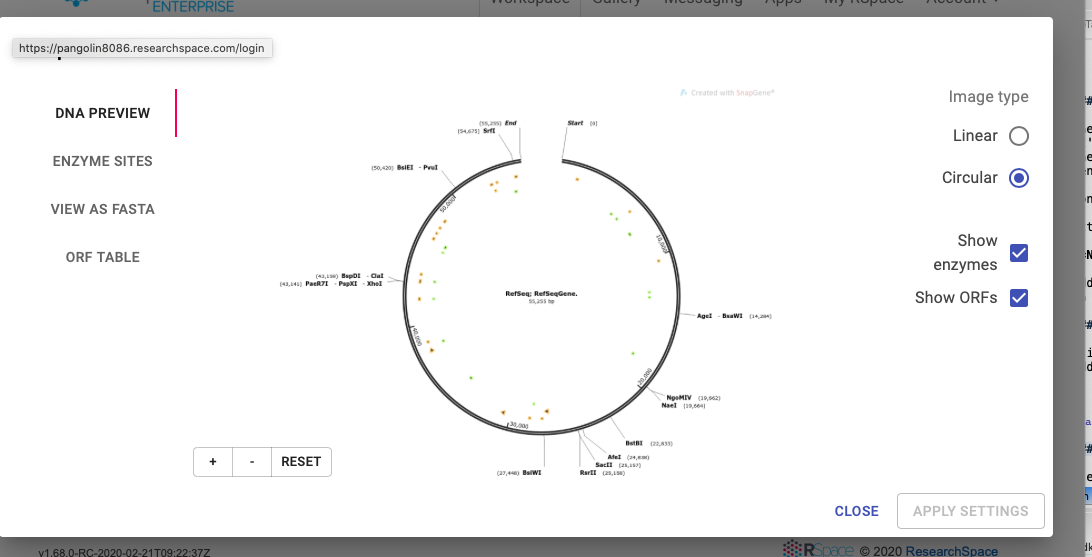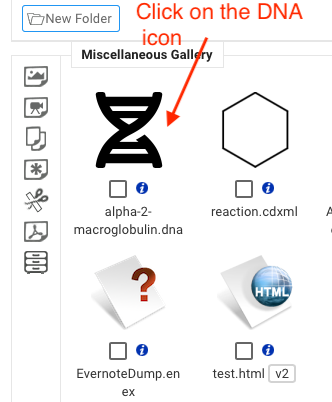SnapGene integration
Viewing DNA sequence files in SnapGene viewer
We are pleased to be able to offer a new service to view DNA sequence files in collaboration with SnapGene. Currently supported file formats include:
- Genbank (.gb, .gbk)
- Fasta (.fa, .fasta)
- Native SnapGene files (.dna)
- Embl (.embl)
- Lasergene (.seq)
- SeqBuilder (.sbd)
- Applied Biosystems Sequence files (.ab1) - RSpace 1.70
You can:
- View images of the files annotated with ORFs and restriction sites
- View ORFs in a table
- View restriction enzyme sites in a table
- View and copy plain-text of the sequence for pasting into another application
You can access this functionality in edit mode, view mode or in the Gallery.
Accessing SnapGene Viewer in a Document
Let's start with a document in View mode into which we've uploaded a DNA file (through drag-and-drop, for example):

Supported DNA files will show with a DNA icon. Click on 'View' to open the Viewer. This will give a visual preview of the sequence. You can pan and zoom by dragging and clicking within the image.
The right-hand panel is for configuring the existing view; the left-hand panel is for changing the view.

You can change the view to see tabular listings of:
- Restriction sites, configurable by type

- Open Reading Frames, configurable by forward/reverse

- Plain text view, for easy copy/paste

Accessing SnapGene viewer in the Gallery
/oldGallery to access this feature!DNA sequence files will appear in the 'Miscellaneous' section of the Gallery. Clicking on the DNA icon will open the viewer.
You can create Folders in the Miscellaneous section to group and organise related DNA files.

Known limitations
- At this stage the full functionality of SnapGene is not available - protein sequence files and alignment files are not supported yet. We hope to work with SnapGene to continue this work.
- There is a limit of 20Mb for an individual sequence file; this feature is designed for plasmids / coding sequences rather than large genomic sequences.